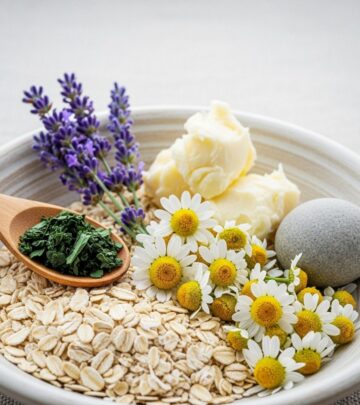7 Fast-Acting Home Remedies to Stop Your Dog From Getting Fleas
Discover natural, effective solutions to keep your furry friend flea-free

Fleas are one of the most frustrating problems dog owners face. These tiny parasites not only cause discomfort and itching for your beloved pet but can also lead to more serious health issues if left untreated. While commercial flea treatments are widely available, many contain harsh chemicals that some pet owners prefer to avoid. Fortunately, there are several natural, fast-acting home remedies that can effectively eliminate fleas and prevent future infestations without exposing your dog to potentially harmful substances.
Understanding how to combat fleas naturally is essential for maintaining your dog’s health and comfort. The remedies discussed in this comprehensive guide utilize common household ingredients and natural substances that have proven effective against flea infestations. These solutions work by either repelling fleas, disrupting their life cycle, or eliminating them directly from your dog’s coat and living environment.
Understanding the Flea Problem
Before diving into remedies, it’s important to understand what you’re dealing with. Fleas are small, wingless insects that feed on the blood of mammals and birds. A single flea can lay up to 50 eggs per day, which means an infestation can quickly spiral out of control if not addressed promptly. Adult fleas live on your dog, but their eggs, larvae, and pupae can be found throughout your home, especially in carpets, bedding, and furniture.
The flea life cycle consists of four stages: egg, larva, pupa, and adult. This cycle can take anywhere from two weeks to several months to complete, depending on environmental conditions. This is why treating just your dog isn’t enough—you must also address the fleas in your home environment to prevent reinfestation. The most effective flea control strategy combines treating your pet, treating your home, and implementing preventive measures.
1. Apple Cider Vinegar Spray
Apple cider vinegar has become one of the most popular natural remedies for flea control, and for good reason. This versatile household ingredient creates an acidic environment on your dog’s skin and coat that fleas find inhospitable. The strong smell and acidic properties of apple cider vinegar act as a natural deterrent, making your dog a less attractive host for these pesky parasites.
To create an effective apple cider vinegar spray, mix equal parts of raw, unfiltered apple cider vinegar with water in a clean spray bottle. For enhanced effectiveness, you can add a pinch of sea salt to the mixture. Shake the bottle well before each use to ensure the ingredients are properly combined. When applying, spray the solution liberally over your dog’s entire coat, being careful to avoid the eyes, nose, and mouth areas. Pay special attention to areas where fleas typically congregate, such as the neck, belly, base of the tail, and behind the ears.
Gently massage the spray into your dog’s fur to ensure it reaches the skin where fleas live and breed. Allow the coat to air dry naturally—there’s no need to rinse it out. The vinegar smell will dissipate as it dries, leaving behind a protective barrier against fleas. You can use this treatment once or twice weekly as a preventive measure, or daily during an active infestation. Additionally, adding a small amount of apple cider vinegar to your dog’s drinking water can help create an internal environment that fleas find unappealing, though you should start with small amounts to ensure your dog continues drinking adequate water.
2. Lemon Bath and Spray
Lemons contain natural citric acid and d-limonene, compounds that are toxic to fleas but safe for dogs when used properly. The acidic nature of lemons creates an environment that fleas cannot tolerate, while the citrus scent acts as a powerful natural repellent. Lemon treatments can be prepared in multiple ways depending on your preference and your dog’s tolerance for bathing.
For a lemon bath, start by squeezing the juice of several fresh lemons into a bowl. Fill your bathtub with warm water and add the lemon juice, stirring well to distribute it evenly. The recommended ratio is approximately half a cup of fresh lemon juice to two cups of water, though you can adjust this based on your dog’s size. Bathe your dog as you normally would, using a gentle, natural dog shampoo, then thoroughly massage the lemon water into their coat. Pay particular attention to problem areas where fleas congregate. Allow the lemon mixture to sit on your dog’s coat for five to ten minutes before rinsing thoroughly with clean water.
Alternatively, you can create a lemon spray by slicing a whole lemon thinly and adding the slices to a pint of boiling water. Allow this mixture to steep overnight, creating a concentrated citrus solution. In the morning, strain out the lemon slices and pour the liquid into a spray bottle. This lemon spray can be applied directly to your dog’s coat between baths, focusing on areas prone to flea activity. You can also use a cloth dampened with lemon solution to wipe down short-haired dogs or apply the solution with a comb worked through the fur. The refreshing citrus scent will leave your dog smelling clean while effectively repelling fleas.
3. Rosemary Dip and Herbal Powder
Rosemary is a powerful natural flea repellent that has been used for centuries in pest control. This aromatic herb contains compounds that fleas find extremely unpleasant, making it an excellent choice for both treating and preventing infestations. Rosemary can be used in two primary forms: as a dip or rinse, and as a herbal powder for environmental treatment.
To prepare a rosemary dip, take two cups of fresh rosemary leaves or one cup of dried rosemary and add them to two pints of boiling water. Allow the mixture to steep for at least thirty minutes, creating a strong herbal infusion. Once the mixture has cooled to a comfortable temperature, strain out the plant material and dilute the rosemary water with additional warm water until you have enough to thoroughly cover your dog. The final temperature should be warm but not hot. Pour this solution over your freshly bathed dog as a final rinse, or allow your dog to stand in a tub while you pour the solution over them repeatedly, ensuring complete coverage. Allow the coat to air dry without rinsing out the rosemary water.
For a herbal flea powder, combine equal parts of dried, powdered rosemary with other flea-repelling herbs such as peppermint, wormwood, fennel, and rue. Grind these herbs together using a mortar and pestle or spice grinder until you achieve a fine, uniform powder. This herbal powder can be sprinkled onto your dog’s bedding, carpets, furniture, and other areas where your pet spends time. The powder works as a natural repellent, discouraging fleas from settling in these areas. After leaving the powder in place for 24 to 48 hours, vacuum it up thoroughly. This treatment is particularly effective because rosemary and these companion herbs are safe for household use and won’t cause respiratory issues when inhaled in small amounts.
4. Diatomaceous Earth Application
Diatomaceous earth is one of the most effective natural flea treatments available, working through mechanical rather than chemical means. This fine, white powder is made from the fossilized remains of tiny aquatic organisms called diatoms. Under a microscope, diatomaceous earth appears as sharp, crystalline structures that are harmless to mammals but deadly to insects with exoskeletons, including fleas.
When fleas come into contact with diatomaceous earth, the microscopic sharp edges of the powder cut through their protective waxy coating, causing them to dehydrate and die. This physical mechanism means fleas cannot develop resistance to diatomaceous earth, unlike chemical pesticides. However, it’s absolutely critical that you use only food-grade diatomaceous earth on your dog and in your home—industrial-grade varieties used for pool filtration contain crystalline silica and are toxic when inhaled.
To apply diatomaceous earth to your dog, choose a well-ventilated area, preferably outdoors. Wearing a dust mask for yourself, lightly sprinkle the powder onto your dog’s coat, working it in with your hands or a soft brush. Focus on the back, neck, belly, legs, and tail area, while carefully avoiding the face, eyes, nose, and mouth. The powder should be visible on the coat but not so thick that it creates clouds of dust. Leave the diatomaceous earth on your dog for several hours or overnight if possible, then brush or comb it out thoroughly. You can repeat this treatment weekly during an active infestation.
For environmental treatment, sprinkle diatomaceous earth evenly across carpets, pet bedding, furniture, and any cracks or crevices where fleas might hide. Pay special attention to areas your dog frequents. Leave the powder undisturbed for at least 48 hours—longer if possible—to ensure maximum effectiveness against all life stages of fleas. Then vacuum thoroughly, making sure to dispose of the vacuum bag or empty the canister immediately to prevent any surviving fleas from escaping back into your home.
5. Coconut Oil Treatment
Coconut oil has gained tremendous popularity as a natural remedy for numerous pet health issues, including flea control. This versatile oil contains lauric acid, a medium-chain fatty acid that has been shown to repel and kill fleas, ticks, and other parasites. The oil works by coating fleas and interfering with their ability to move and feed, ultimately causing them to die. Additionally, coconut oil soothes irritated skin, promotes healing of flea bites, and improves the overall condition of your dog’s coat.
To use coconut oil as a topical flea treatment, start with organic, virgin coconut oil in its solid form. Warm a tablespoon or two between your hands until it melts into a liquid, then massage it thoroughly into your dog’s coat, working from the skin outward. Pay extra attention to areas where fleas typically hide: around the neck, behind the ears, at the base of the tail, on the belly, and between the toes. The amount of coconut oil you’ll need depends on your dog’s size—small dogs may only require a tablespoon, while large breeds might need several tablespoons for complete coverage.
Allow the coconut oil to remain on your dog’s coat for at least several hours, or ideally overnight. During this time, the oil will suffocate adult fleas and create an inhospitable environment for new fleas. After the treatment period, bathe your dog with a gentle, natural shampoo to remove the oil and dead fleas. You can repeat this treatment weekly as needed. As a bonus, coconut oil can also be added to your dog’s diet to provide internal benefits that may help repel fleas from the inside out. Start with small amounts—about one-quarter teaspoon per ten pounds of body weight daily—and gradually increase if your dog tolerates it well.
6. Neem Oil Solution
Neem oil is derived from the seeds of the neem tree, native to India, and has been used for centuries as a natural insecticide and medicinal treatment. This powerful oil contains azadirachtin, a compound that disrupts the hormonal systems of insects, preventing them from breeding and maturing. Neem oil also has antibacterial, antifungal, and anti-inflammatory properties that can help heal flea bites and prevent secondary skin infections.
Because pure neem oil is extremely concentrated and has a strong odor, it must always be diluted before use on dogs. To create a neem oil spray, mix one teaspoon of high-quality, organic neem oil with one cup of warm water. Add a small drop of mild liquid soap to help emulsify the oil and water—this ensures they mix properly rather than separating. Pour the mixture into a spray bottle and shake vigorously before each use. The solution will have a garlicky, sulfurous smell that fades as it dries.
Spray the neem oil solution generously over your dog’s entire coat, avoiding the face and eye area. Massage the solution into the fur, ensuring it reaches the skin where fleas live. Unlike some other treatments, neem oil should be left on the coat to continue working—there’s no need to rinse it out. The oil will absorb into the skin and provide lasting protection against fleas while also nourishing the coat and skin. You can apply this treatment once or twice weekly during flea season or when dealing with an active infestation. Keep in mind that some dogs may be sensitive to neem oil, so perform a patch test on a small area first and watch for any signs of irritation.
7. Regular Flea Combing and Bathing Routine
While not a remedy in the traditional sense, establishing a consistent flea combing and bathing routine is one of the most effective ways to control and prevent flea infestations. This hands-on approach allows you to physically remove fleas, flea eggs, and flea dirt from your dog’s coat while monitoring for signs of infestation. Regular grooming also strengthens the bond between you and your pet while keeping their coat healthy and beautiful.
Invest in a high-quality flea comb with fine, closely-spaced metal teeth designed specifically for catching fleas and their eggs. These combs are inexpensive and available at most pet stores. To use the flea comb effectively, work in a systematic pattern across your dog’s entire body, starting at the head and moving toward the tail. Pay special attention to warm areas where fleas congregate: the neck, armpits, groin, and base of the tail. After each stroke through the fur, examine the comb for fleas, eggs, or flea dirt (small black specks that are actually flea feces). If you find any, immediately dip the comb in a bowl of hot, soapy water to kill the fleas before they can escape.
Combine regular flea combing with frequent bathing using a gentle, natural dog shampoo. While you don’t want to over-bathe your dog and strip natural oils from their skin, bathing every two to four weeks during flea season can significantly reduce flea populations. The mechanical action of bathing—the water, lather, and rinsing—drowns and removes many fleas from your dog’s coat. For enhanced flea-fighting power, add a few drops of lavender or eucalyptus essential oil to the bathwater, or use one of the other remedies mentioned above as a final rinse. Always ensure the water temperature is comfortable for your dog, and thoroughly rinse out all shampoo residue to prevent skin irritation.
Treating Your Home Environment
Successfully eliminating fleas from your dog requires treating your home environment simultaneously. Remember that only adult fleas live on your pet—the eggs, larvae, and pupae develop in your carpets, furniture, and bedding, representing about 95% of the total flea population in your home. Without addressing these life stages, you’ll face continuous reinfestation no matter how well you treat your dog.
Start by washing all pet bedding, blankets, and any removable furniture covers in hot water with detergent. The heat from the washer and dryer will kill fleas at all life stages. Wash these items at least once weekly during an infestation. For items that can’t be washed, such as large dog beds or furniture, vacuum them thoroughly and consider using a steam cleaner, as the high heat effectively kills fleas and their eggs.
Vacuum your entire home thoroughly, paying special attention to areas where your dog spends time, along baseboards, under furniture, and in corners where flea larvae might hide. The vacuum’s suction removes eggs, larvae, pupae, and even some adult fleas. Immediately after vacuuming, seal the vacuum bag in a plastic bag and dispose of it outside your home, or empty bagless canisters directly into an outdoor trash bin. This prevents any surviving fleas from crawling back out into your home.
Create a simple flea trap by placing a shallow bowl of warm water mixed with a few drops of dish soap on the floor overnight. Position a small lamp or nightlight near the bowl. Fleas are attracted to warmth and light, and will jump toward the source, landing in the soapy water where they become trapped and drown. This method is particularly effective in rooms where your dog sleeps. Check the trap each morning and you’ll be able to see how many fleas you’ve captured, which also helps you monitor the effectiveness of your overall flea control program.
Prevention Strategies for Long-Term Success
Once you’ve successfully eliminated fleas from your dog and home, implementing preventive strategies is essential to avoid future infestations. Prevention is always easier and less stressful than treatment, and natural preventive measures can be seamlessly integrated into your regular pet care routine.
Maintain a consistent grooming schedule that includes weekly flea combing and regular baths. This allows you to catch any new fleas before they establish a breeding population. During flea season—typically spring through fall in most climates—increase the frequency of your grooming checks. Keep your dog’s coat clean and healthy, as fleas are less likely to establish themselves on dogs with well-maintained skin and fur.
Consider adding natural flea-repelling supplements to your dog’s diet. Garlic in very small amounts has been traditionally used, though its safety is debated and it should only be given under veterinary guidance. Safer options include B-complex vitamins and omega-3 fatty acids, which promote healthy skin and may make your dog less attractive to fleas. Always consult your veterinarian before adding any supplements to your dog’s diet.
Maintain a clean home environment by vacuuming regularly, even when you don’t suspect fleas. Wash pet bedding frequently, and consider using cedar chips in outdoor areas where your dog spends time, as cedar naturally repels fleas. Keep your yard well-maintained by mowing the lawn regularly, removing leaf litter and debris, and reducing areas of excessive moisture where flea larvae thrive. If possible, limit your dog’s contact with wild animals and unfamiliar dogs that may carry fleas.
When to Seek Professional Help
While natural home remedies can be highly effective for mild to moderate flea infestations, there are times when professional intervention becomes necessary. If you’ve consistently applied multiple home remedies for several weeks without seeing improvement, or if the infestation appears to be worsening, it’s time to consult your veterinarian. Some dogs may have severe allergic reactions to flea bites, a condition called flea allergy dermatitis, which requires medical treatment beyond home remedies.
Watch for signs of complications from flea infestations, including excessive scratching leading to open wounds, hair loss, pale gums (which could indicate anemia from blood loss), or the presence of tapeworms (which appear as small, rice-like segments in your dog’s feces). These conditions require veterinary attention and may necessitate prescription medications alongside your natural treatment efforts.
Your veterinarian can also help you develop a comprehensive flea prevention plan tailored to your dog’s specific needs, health status, and living environment. They can recommend which natural remedies are safest for your individual dog, especially if your pet has pre-existing health conditions, is pregnant, or is a young puppy. Don’t hesitate to seek professional guidance—combining veterinary expertise with natural home remedies often provides the best outcome for your dog’s health and comfort.
Frequently Asked Questions
Q: How long does it take for natural flea remedies to work?
A: Natural remedies typically begin working immediately upon application, killing or repelling adult fleas on contact. However, completely eliminating an infestation takes two to three weeks of consistent treatment, as you must address all life stages of fleas. Patience and persistence are key to success with natural methods.
Q: Can I use multiple natural flea remedies together?
A: Yes, combining different natural remedies often enhances effectiveness. For example, you might use apple cider vinegar spray between baths, give lemon baths weekly, and apply diatomaceous earth to your home environment. However, avoid using too many topical treatments simultaneously on your dog’s skin, as this could cause irritation. Space out different treatments by a few days and monitor your dog’s skin for any adverse reactions.
Q: Are these natural remedies safe for puppies?
A: Many natural remedies are safer for puppies than chemical treatments, but caution is still required. Puppies under 12 weeks old have sensitive skin and developing immune systems. Gentle options like flea combing and mild herbal rinses are generally safe, but avoid strong essential oils and consult your veterinarian before applying any treatment to very young puppies.
Q: How can I tell if my dog has fleas?
A: Common signs include excessive scratching, biting at the skin, restlessness, hair loss (especially around the tail base), and visible flea dirt (small black specks) in the coat. You might also see actual fleas, which appear as tiny brown insects that move quickly through the fur. Use a flea comb over white paper to catch any fleas or flea dirt for easier identification.
Q: Will these remedies work on cats as well?
A: Some remedies are safe for cats, but cats are more sensitive to certain substances than dogs, particularly essential oils and citrus products. Never use remedies containing essential oils on cats without veterinary approval, as these can be toxic to felines. Diatomaceous earth and simple flea combing are generally safe for cats, but always consult a veterinarian before treating cats with any home remedy.
Q: Can fleas survive in winter?
A: While flea activity typically decreases in cold weather, fleas can survive indoors year-round in heated homes. They may also survive outdoors in protected areas or on wild animals. This is why maintaining preventive measures throughout the year is important, even during winter months.
Q: Do I need to treat my home if I only see a few fleas on my dog?
A: Yes, absolutely. For every flea you see on your dog, there are likely dozens or hundreds of eggs, larvae, and pupae in your home environment. Treating only your dog without addressing your home will result in continuous reinfestation as new fleas mature and jump onto your pet.
References
- https://www.ellevetsciences.com/blog/home-remedies-for-fleas-on-dog/
- https://wearethecure.org/natural-flea-treatments-for-dogs/
- https://pfharris.com/blog/top-10-home-remedies-to-get-rid-of-fleas
- https://www.thedoghouseps.com/remedies-for-fleas-on-dogs/
- https://www.petmd.com/parasites/flea-and-tick-treatments-that-dont-work
- https://www.webmd.com/pets/remedies-for-fleas
- https://extension.msstate.edu/publications/control-fleas-your-pet-your-house-and-your-yard
Read full bio of Sneha Tete












